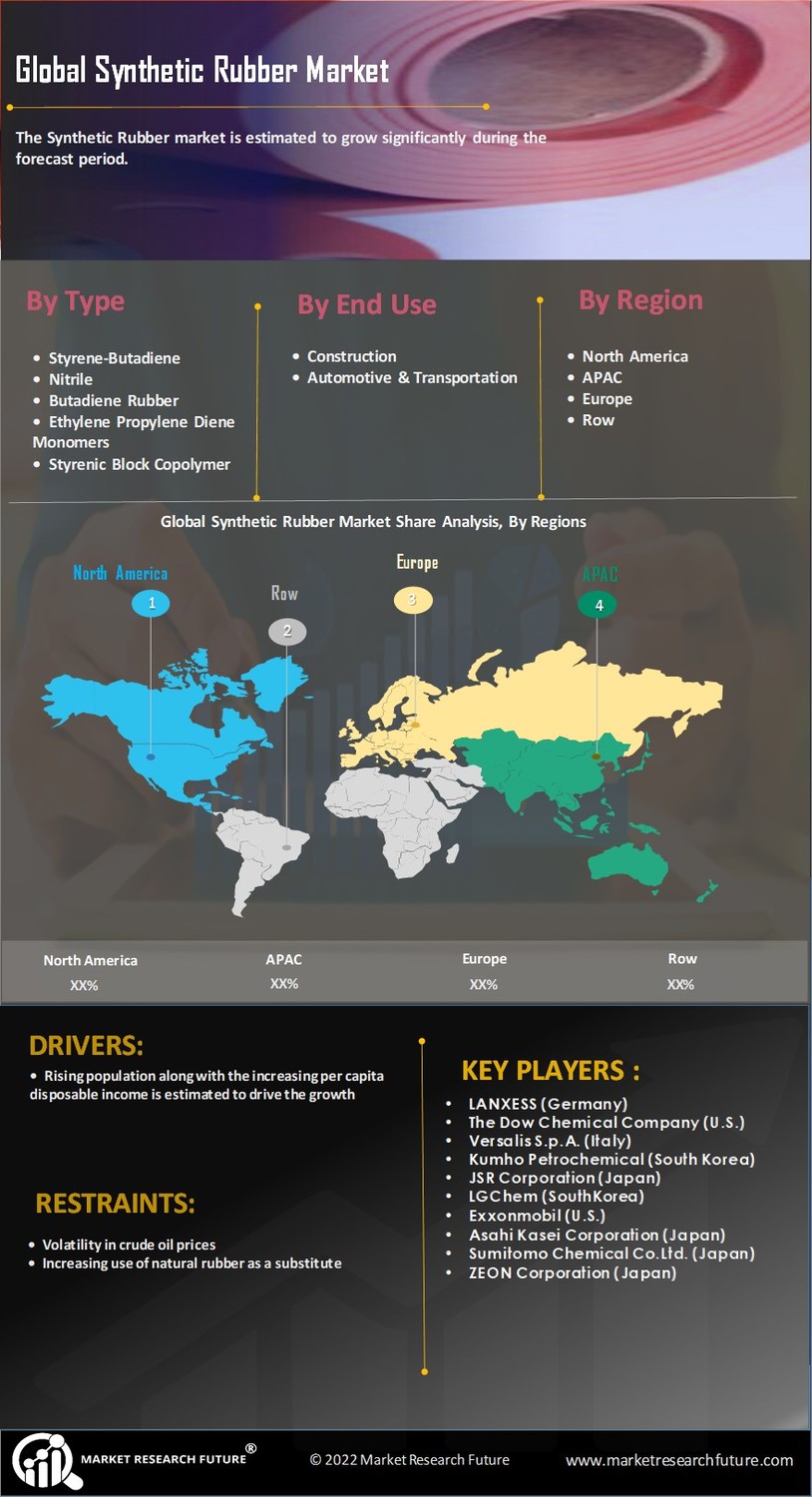Growth in Construction Activities
The Global Synthetic Rubber Market Industry is significantly influenced by the expansion of construction activities worldwide. Synthetic rubber is utilized in various applications, including roofing membranes, flooring, and sealants, which are essential for modern construction projects. As urbanization continues to rise, particularly in developing regions, the demand for synthetic rubber is expected to increase. This growth is anticipated to contribute to the market's expansion, with projections indicating a rise to 36.4 USD Billion by 2035. The construction sector's increasing reliance on synthetic rubber for its versatility and performance characteristics suggests a promising outlook for the industry.
Rising Demand from Automotive Sector
The automotive sector plays a pivotal role in driving the Global Synthetic Rubber Market Industry. With the increasing production of vehicles, the demand for synthetic rubber, particularly in tires and seals, is expected to surge. In 2024, the market is projected to reach 21.1 USD Billion, reflecting the industry's reliance on synthetic rubber for enhanced performance and durability. As electric vehicles gain traction, the need for high-performance materials is likely to escalate, further propelling market growth. This trend indicates a robust future for synthetic rubber, especially as the automotive industry aims for sustainability and efficiency.
Increasing Application in Consumer Goods
The Global Synthetic Rubber Market Industry is witnessing a surge in demand due to its increasing application in consumer goods. Products such as footwear, adhesives, and sporting goods utilize synthetic rubber for its durability and flexibility. As consumer preferences shift towards high-quality and long-lasting products, manufacturers are likely to increase their use of synthetic rubber in production. This trend is expected to bolster the market, contributing to its growth trajectory. The versatility of synthetic rubber in various consumer applications indicates a sustained demand, further solidifying its position in the global market.
Technological Advancements in Production
Technological advancements in the production of synthetic rubber are likely to enhance the efficiency and sustainability of the Global Synthetic Rubber Market Industry. Innovations such as the development of bio-based synthetic rubber and improved polymerization processes are expected to reduce environmental impact while increasing production capacity. These advancements may lead to cost reductions and improved product quality, making synthetic rubber more appealing to manufacturers across various sectors. As the industry evolves, the integration of advanced technologies could potentially drive market growth, aligning with the projected CAGR of 5.1% from 2025 to 2035.
Environmental Regulations and Sustainability Initiatives
The Global Synthetic Rubber Market Industry is increasingly shaped by environmental regulations and sustainability initiatives. Governments worldwide are implementing stricter regulations on materials used in manufacturing, prompting companies to seek eco-friendly alternatives. Synthetic rubber, particularly bio-based variants, is gaining traction as a sustainable option. The industry's shift towards greener practices is likely to attract investment and innovation, fostering growth. As sustainability becomes a priority for consumers and manufacturers alike, the demand for environmentally friendly synthetic rubber solutions is expected to rise, positively impacting the market.

















Leave a Comment